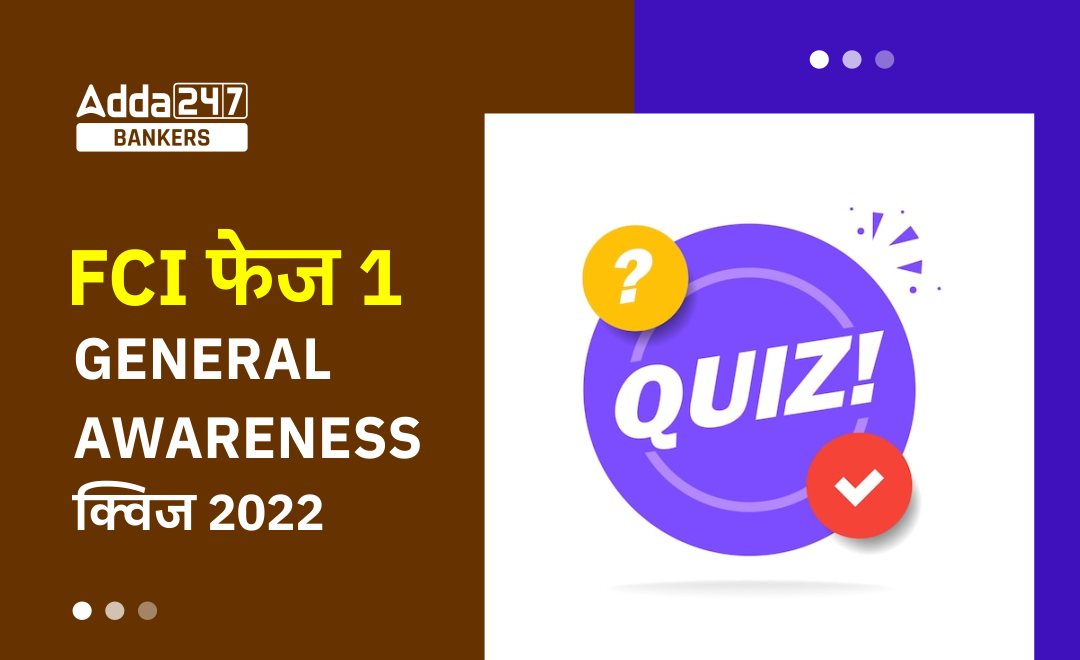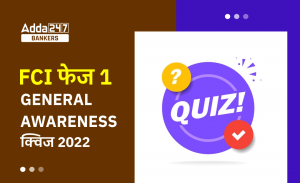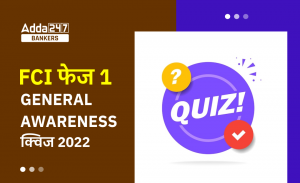Q1. निम्नलिखित में से कौन सा रासायनिक परिवर्तन है?
(a) बर्फ का पिघलना
(b) मैग्नीशियम का वायु में जलना
(c) चीनी का पानी में घुलना
(d) हवा का बहना
(e) इनमें से कोई नहीं
Q2. सीमा पार तस्करी की एक वस्तु ‘येलो केक’ ____ है।
(a) हेरोइन का अपरिष्कृत रूप
(b) कोकीन का अपरिष्कृत रूप
(c) यूरेनियम ऑक्साइड
(d) अपरिष्कृत सोना
(e) इनमें से कोई नहीं
Q3. निम्नलिखित में से कौन सा ऑक्साइड पानी में घुल जाता है?
(a) CuO
(b) Al2O3
(c) Fe2O3
(d) Na2O
(e) इनमें से कोई नहीं
Q4. कोशिका के अपशिष्ट द्विध्रुवीय प्रणाली में शामिल कोशिका अंग हैं:
(a) गॉल्जीकाय
(b) लाइसोसोम
(c) क्रोमोसोम
(d) राइबोसोम
(e) उपरोक्त में से कोई नहीं
Q5. एक पशु कोशिका, एक पादप कोशिका और एक जीवाणु निम्नलिखित संरचनात्मक विशेषताएं साझा करते हैं:
(a) कोशिका झिल्ली, एंडोप्लाज्मिक रेटिकुलम, रिक्तिकाएं
(b) सेल दीवार, प्लाज्मा झिल्ली, माइटोकॉन्ड्रिया
(c) कोशिका भित्ति, केंद्रक, कोशिकाद्रव्य
(d) प्लाज्मा झिल्ली, साइटोप्लाज्म, राइबोसोम
(e) उपरोक्त में से कोई नहीं
Q6. निम्नलिखित में से कौन सा पैरेन्काइमा का संशोधन है?
(a) फ्लोएम में पाए जाने वाले फाइबर
(b) ट्रेकिड्स
(c) वेसल
(d) क्लोरेन्काइमा
(e) उपरोक्त में से कोई नहीं
Q7. निम्नलिखित में से कौन जिम्नोस्पर्म में अनुपस्थित हैं?
(a) जाइलम वाहिकाओं
(b) जाइलम रेशे
(c) ट्रेकिड्स और फाइबर
(d) ये सभी
(e) उपरोक्त में से कोई नहीं
Q8. रक्त समूह ‘A’ वाला व्यक्ति रक्त समूह ‘A’ या ‘AB’ वाले व्यक्तियों को रक्तदान कर सकता है क्योंकि इसमें
(a) ‘A’ और ‘B’ दोनों एंटीजन हैं।
(b) केवल ‘A’ एंटीजन और ‘B’ एंटीबॉडी हैं।
(c) केवल ‘B’ एंटीजन और ‘A’ एंटीबॉडी हैं।
(d) कोई एंटीजन और एंटीबॉडी नहीं है।
(e) उपरोक्त में से कोई नहीं
Q9. निम्नलिखित में से कौन सा कथन सही नहीं है?
(a) सभी प्रोटीन एंजाइम हैं
(b) अधिकतर एंजाइम प्रोटीन होते हैं
(c) सभी वसा ऊर्जा समृद्ध यौगिक हैं
(d) ग्लूकोज एक सामान्य कार्बोहाइड्रेट है
(e) उपरोक्त में से कोई नहीं
Q10. निम्नलिखित में से किस विटामिन की रक्त के थक्के जमने में भूमिका होती है?
(a) विटामिन ए
(b) विटामिन डी
(c) विटामिन ई
(d) विटामिन के
(e) उपरोक्त में से कोई नहीं
SOLUTIONS:
S1.Ans. (b)
Sol. Physical changes are those which are reversible and in such changes no new product (s) are formed. Chemical changes are those which are irreversible and involves formation of new product (s). Burning of magnesium is chemical change in which magnesium oxide is formed 2Mg + O2 = 2MgO
S2.Ans. (c)
Sol. Yellow cakes generally denotes various compounds of uranium like uranium oxides.
S3.Ans. (d)
Sol. Oxides of Sodium readily dissolved in water as it has ionic bond which breaks in water easily other oxides have covalent bond which do not break easily.
S4.Ans. (b)
Sol. Lysosomes are found in cytoplasm of the cell. It acts as the waste disposal system by digesting unwanted or harmful substances in the cytoplasm. Due to this act, they are known as ‘suicide bags’.
S5.Ans. (d)
Sol. Animal and plant cells are eukaryotic cells having cell membrane, cytoplasm, true nucleus, and various organelles (like ER, Golgi complex, ribosomes ((80S) etc.) Bacterial cell is prokaryotic cell in which plasma membrane, cell wall, primitive type of nucleus, ribosomes (70S) etc. present but cell organelles are absent. Animal cells lack cell wall. But there are some structural features which are common in these cells like plasma/cell membrane, cytoplasm and ribosomes.
S6.Ans. (d)
Sol. Chlorenchyma (parenchymatous cells having chloroplasts) participates in photosynthesis. It is present in mesophyll cells of leaves and differentiated into palisade parenchyma and spongy parenchyma.
S7.Ans. (a)
Sol. A vessel element is one of the cell types found in xylem, the water conducting tissue of plants. Vessel elements are typically found in the angiosperms but absent from most gymnosperms such as the conifers.
S8.Ans. (b)
Sol. A person with blood group ‘A’ can donate blood to the person with blood group ‘A’ or ‘AB’ because it has only ‘A’ antigen on RBCs and B-antibodies in plasma. In blood grup AB, there is no antibody in plasma so persons with ‘AB’ group can accept blood from persons with AB as well as the other groups of blood.
S9.Ans. (a)
Sol. Not all proteins are enzymes although a lot of them are. There are proteins that play structural functions (cytoskeletal proteins, keratin, collagen) or transport (haemoglobin, membrane channels).
S10.Ans. (d)
Sol. Vitamin-K plays on essential role in clotting of blood. It act as a cofactor for the enzyme to bind with calcium ions required for activation of coagulation factors such as prothrombin.



 FCI Phase I सामान्य जागरूकता क्विज 2022 ...
FCI Phase I सामान्य जागरूकता क्विज 2022 ...
 FCI Phase I सामान्य जागरूकता क्विज 2022 ...
FCI Phase I सामान्य जागरूकता क्विज 2022 ...
 FCI Phase I सामान्य जागरूकता क्विज 2022 ...
FCI Phase I सामान्य जागरूकता क्विज 2022 ...








